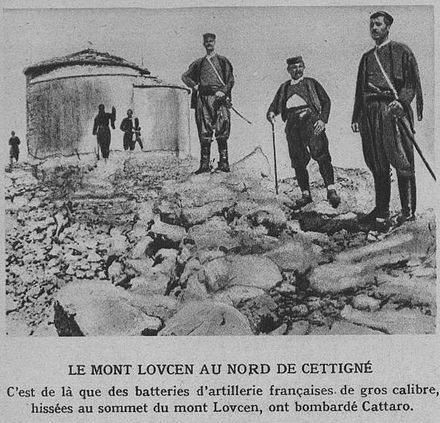
K.u.k. FeldmarschallFranz Xaver Josef Graf Conrad von Hötzendorf, sometimes anglicised as Hoetzendorf, was an Austrian general who played a central role in World War I. He served as Field Marshal and Chief of the General Staff of the military of the Austro-Hungarian Army and Navy from 1906 to 1917. He was in charge during the July Crisis of 1914 that caused World War I. For years he had repeatedly called for preemptive war against Serbia to rescue the multiethnic Habsburg Empire, which was, he believed, nearing disintegration. Later on, he came to believe that the Dual Monarchy had taken action at the eleventh hour. The Army was also unprepared and he had resorted to politics to further his goals. He was unaware that Germany would relocate the majority of his forces to the East, rather than in the Balkans. Conrad was anxious about invading Russia and when the Tsar's armies had captured the Carpathian mountain passes and were on the verge of invading Hungary, Italy entered the war on the side of the Allies. Nevertheless, the Austro-Germans cleared Galicia and Poland during the Gorlice–Tarnów Offensive in the summer of 1915 and later conquered Serbia in October. From 1915 his troops were increasingly reliant on German support and command. Without support from his Germanic allies the Austro-Hungarian Army was an exhausted force. In March 1917, Charles I of Austria dismissed him as Chief of Staff after Emperor Franz Joseph died and Conrad's Trentino Offensive had failed to achieve its objective; he then commanded an army group on the Italian Front until he retired in the summer of 1918. He died in 1925.

The Eastern Front or Eastern Theater of World War I was a theater of operations that encompassed at its greatest extent the entire frontier between the Russian Empire and Romania on one side and the Austro-Hungarian Empire, Bulgaria, the Ottoman Empire and the German Empire on the other. It stretched from the Baltic Sea in the north to the Black Sea in the south, involved most of Eastern Europe and stretched deep into Central Europe as well. The term contrasts with "Western Front", which was being fought in Belgium and France.
The Serbian First Army was a Serbian field army that fought during World War I.

The Austro-Hungarian Army was the ground force of the Austro-Hungarian Dual Monarchy from 1867 to 1918. It was composed of three parts: the joint army, the Imperial Austrian Landwehr, and the Royal Hungarian Honvéd.
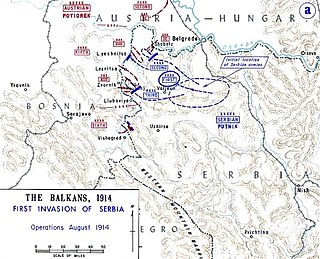
The Battle of Cer was a military campaign fought between Austria-Hungary and Serbia in August 1914, starting three weeks into the Serbian Campaign, the initial military action of the First World War. It took place around Cer Mountain and several surrounding villages, as well as the town of Šabac.
The Bulgarian First Army was a Bulgarian field army during the Balkan Wars, World War I and World War II.

The Battle of Kolubara was a campaign fought between Austria-Hungary and Serbia in November and December 1914, during the Serbian Campaign of World War I. It commenced on 16 November, when the Austro-Hungarians under the command of Oskar Potiorek reached the Kolubara River during their third invasion of Serbia that year, having captured the strategic town of Valjevo and forced the Serbian Army to undertake a series of retreats. The Serbs withdrew from Belgrade on 29–30 November, and the city soon fell under Austro-Hungarian control. On 2 December, the Serbian Army launched a surprise counter-attack all along the front. Valjevo and Užice were retaken by the Serbs on 8 December and the Austro-Hungarians retreated to Belgrade, which 5th Army commander Liborius Ritter von Frank deemed to be untenable. The Austro-Hungarians abandoned the city between 14 and 15 December and retreated back into Austria-Hungary, allowing the Serbs to retake their capital the following day.
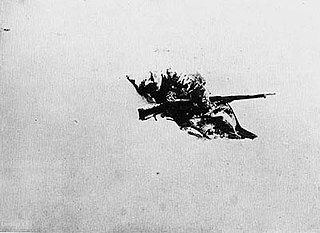
The Balkans campaign, or Balkan theatre of World War I was fought between the Central Powers, represented by Austria-Hungary, Bulgaria, Germany and the Ottoman Empire on one side and the Allies, represented by Serbia, Montenegro, France, the United Kingdom, Russia and Italy, later joined by Greece, on the other side.

The Macedonian front, also known as the Salonica front, was a military theatre of World War I formed as a result of an attempt by the Allied Powers to aid Serbia, in the fall of 1915, against the combined attack of Germany, Austria-Hungary and Bulgaria. The expedition came too late and in insufficient force to prevent the fall of Serbia, and was complicated by the internal political crisis in Greece. Eventually, a stable front was established, running from the Albanian Adriatic coast to the Struma River, pitting a multinational Allied force against the Bulgarian Army, which was at various times bolstered with smaller units from the other Central Powers. The Macedonian front remained quite stable, despite local actions, until the great Allied offensive in September 1918, which resulted in the capitulation of Bulgaria and the liberation of Serbia.
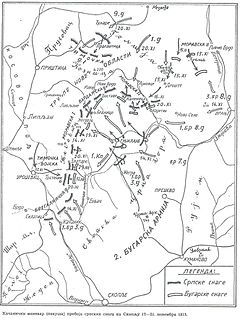
The Kosovo Offensive was an offensive launched part of the greater Serbian campaign of World War I, by German, Austro-Hungarian, and Bulgarian units under the command of Prussian Field Marshal Mackensen. It was conducted in the area of Kosovo where the Serbian army had successfully retreated, during the second half of November 1915. The ultimate goal of the offensive was to encircle and destroy the remnants of the Serbian army. The defeat of Serbia and the forced exile of its army and government marked the end of the Serbian Campaign.
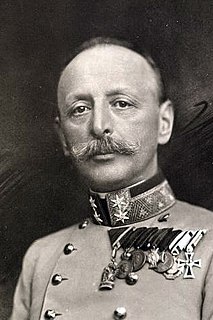
Stjepan Freiherr Sarkotić von Lovćen was an Austro-Hungarian Army lieutenant field marshal who served as Governor of Bosnia and Herzegovina and military commander of Dalmatia and Montenegro during the World War I.

The Kingdom of Bulgaria participated in World War I on the side of the Central Powers from 14 October 1915, when the country declared war on Serbia, until 30 September 1918, when the Armistice of Thessalonica came into effect.

Viktor Graf von Scheuchenstuel was a Colonel General in the Austro-Hungarian Army. He was a general staff officer and division commander until World War I broke out. During World War I he was a Corps and Army commander serving in Serbia, Albania and Italy. During World War I he was promoted to Graf in the Austrian nobility. Following the end of World War I and the end of the Austro-Hungarian Empire, Scheuchenstuel retired from the military. He died in Vienna.

The Austro-Hungarian Armed Forces or Imperial and Royal Armed Forces were the military forces of Austria-Hungary. It comprised three main branches: The Army (Landstreitkräfte), the Navy (Kriegsmarine) and the Aviation Troops (Luftfahrtruppen). The Army in turn consisted of its own three branches: The Common Army, the Imperial-Royal Landwehr and the Royal Hungarian Honvéd.
Albania during World War I was an independent state, having gained independence from the Ottoman Empire, on 28 November 1912, following the First Balkan War. It was recognized by the Great Powers as the Principality of Albania, after Turkey officially renounced all its rights in May 1913. A new country with various ethnic groups, it quickly unraveled and just a few months after taking power, its ruler, Austro-Hungarian aristocrat, Prince William of Wied, was forced to flee. After World War I broke out, anarchy took hold of the country as tribes and regions rebelled against central rule. To protect the Greek minority, Greek control was established in the southern districts replacing the Northern Epirote units beginning in October 1914. In response to this, Italy, although officially neutral, also sent troops into the port of Vlorë, while Serbia and Montenegro took control of northern regions. In 1915 Serbia was overrun by combined German, Austro-Hungarian, and Bulgarian forces; the Serbian army retreated across the mountain passes of northern Albania, towards the Adriatic. Italian troops drove the Greeks from southern Albania and brought almost all Albanian territory under their control. Austrian forces invaded in June 1916, Austro-Hungarian forces remained in Albania until the end of the war when a multinational Allied force broke through and pushed them out in 1918.

The Battle of Krivolak was a World War I battle, fought between 21 October and 22 November 1915. The battle was fought in the initial stage of the Macedonian campaign, in the Balkans Theatre. On October 21, Bulgarian troops attacked the French-held positions near the Strumica rail station, at the time part of the Kingdom of Serbia, starting the battle. Fighting continued until November 22, when two Serbian divisions failed to capture Skopje, thus rendering the continuation of Entente offensive operations dangerous and forcing the French to evacuate their forces from the region.
The K.u.k. Military Administration in Serbia was the Austro-Hungarian military administration in the Kingdom of Serbia from 1915 to 1918 during the Austro-Hungarian occupation of Serbia. It was formed by the Central Powers during World War I.

The Great Retreat, also known as the Albanian Golgotha , took place during the First World War following the invasion of Serbia by the Central Powers. Facing total destruction but refusing to come to terms, the government and the supreme command made the decision, on 23 November 1915, to retreat through Montenegro and Albania where they hoped to reach the Adriatic coast and be rescued by Allied ships.
The Austro-Hungarian Sixth Army was an field army of the Austro-Hungarian Army that fought during World War I.
The 3rd Army was a field army-level command within the ground forces of Austria-Hungary during World War I. It was primarily active on the Eastern Front against the Russian Empire and in the Balkans against Serbia and Montenegro. Later on, the 3rd Army took part in some fighting on the Italian Front before returning to the eastern theater by 1917 to repulse the Kerensky Offensive. Its remaining units were merged with the 7th Army in January 1918.


